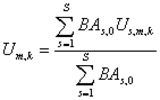Content
About the statistics
Definitions
-
Name and topic
-
Name: Index of industrial production
Topic: Energy and manufacturing
-
Next release
-
-
Responsible division
-
Division for Business Cycle Statistics
-
Definitions of the main concepts and variables
-
Long-term indices: Long-term indices are published together with reviewed figures on the Internet for the overall index, aggregates, main activities and main industrial groupings.
Local unit (establishment): An enterprise or part of an enterprise that is located in one particular place and can be identified geographically.
Enterprise: The smallest combination of legal units that is an organisational unit producing goods or services and that benefits from a certain degree of autonomy in decision-making.
NACE: Standard for industrial classification used by EUROSTAT. Based on the UN's international standard for industrial classification, ISIC Rev. 4.
Standard Industrial Classification 2007 (SIC2007) , which is a Norwegian adaptation of EUROSTAT's NACE Rev. 2. SIC2007 forms the basis for coding units according to principal activity in the Central Register of Establishments and Enterprises.
Processing level: The most detailed level of the statistics.
Unadjusted figures (original series): Raw data figures with primary information from the respondent.
Calender adjusted series (pre-adjusted series): Adjusted for working-days, moving holidays and fixed public holidays in Norway.
Seasonally adjusted figures: Pre-adjusted series for which seasonal effects have been removed (included length of month). X12-ARIMA is used to calculate these figures.
Imputation: An estimated value for a missing observation.
-
Standard classifications
-
The survey is classified according to the Standard Industrial Classification 2007 (SIC2007). This is a Norwegian adaptation of NACE Rev. 2. SIC2007 forms the basis for classifying units according to principal activity in the Central Register of Establishments and Enterprises (CRE). The use of common standards is essential in order to enable the comparison and analysis of statistical data at national/international level and over time.
The survey is also classified according to EUROSTAT's end-use categories (Main Industrial Groupings, MIG). The end-use categories (MIGs) are based on the 3-digit level industrial groupings in SIC 2007. Six end-use categories are included in the survey:
MIG Code
Description
E1
Intermediate goods
E2
Capital goods
E3
Consumer durables
E4
Consumer non-durables
E5
Consumer goods (E3+E4)
E6
Energy goods
The following table summarises the most important industries included in the different end-use categories:
MIG
Main industries included
Intermediate goods
Support activities for oil and gas extraction, wood and wood products, Pulp, paper and paper products, Basic chemicals and Basic metals
Capital goods
Fabricated metal products, Machinery and equipment and Building of ships, oil platforms and modules
Consumer durables
Production of furniture
Consumer non-durables
Food products, Printing and reproduction and Pharmaceuticals
Consumer goods (E3+E4)
Food products, Printing and reproduction, Pharmaceuticals and Production of furniture
Energy goods
Oil and gas extraction, Refined petroleum products and Electricity, gas and steam supply
For a complete description of the industries covered by each MIG, see Commission regulation (EC) No 656/2007 or KLASS in the following link: https://www.ssb.no/en/klass/klassifikasjoner/6/varianter/1121.
The objective of this classification is to provide an activity breakdown of NACE, which is an intermediate level between the Sections (for example C: Manufacturing) and the Subsections (for example CA: Manufacture of food products, beverages and tobacco). The classification of the different units is based on the application of the produced products. It should be noted that the MIGs are not comparable in size, and the consumer durables heading in particular is smaller than the others.


